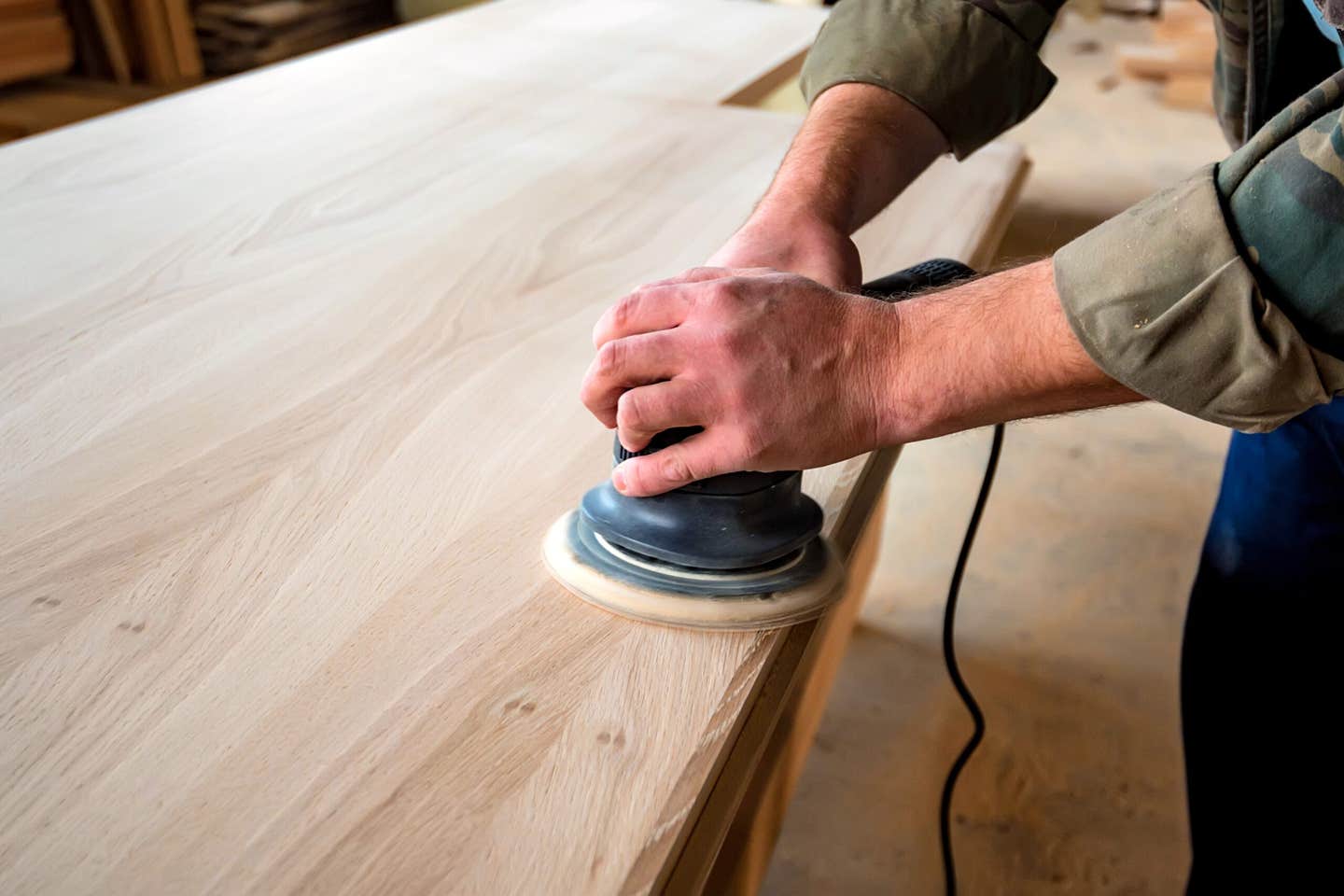Lean, clean and simple
It’s hard to keep up with manufacturing technology and also the vast glossary of new terms that it has generated. In a rush to be “innovative,” many leading woodshop machine…
It’s hard to keep up with manufacturing technology and also the vast glossary of new terms that it has generated. In a rush to be “innovative,” many leading woodshop machine manufacturers have followed the lead of the computer industry and fallen into the habit of engineer-speak. They now describe their products in such technical language that it often leaves cabinetmakers scratching our heads.
The same is true of shop management. Many lean manufacturing terms were inherited from an early Toyota model in the 1980s and have never been translated to English. As the woodshop industry becomes more and more immersed in the doctrine, one might be forgiven for suggesting that a project manager should carry a Japanese dictionary just to get through a Monday morning meeting. American management seems utterly intrigued by words such as Kaizen, KanBan and Muda, and attributes a mystical aura to them. Through the years, executives and theorists have added an entire glossary of new acronyms and shorthand to this vocabulary – terms such as 6 Sigma, Andon, Takt Time and Smed.
Sounds a bit like Klingon, doesn’t it?
These two worlds — complex machines/software and lean manufacturing — are becoming more and more intertwined in the modern woodshop. And the language they use is simultaneously becoming more and more confusing for people who just want to work wood. Manufacturers are even changing the meaning and weight of some words as time goes by. For example, to most shop employees the term “nesting” simply refers to laying out parts on a sheet of plywood in the most efficient way. It’s the old-fashioned concept of optimizing — trying to get the optimum (or greatest) number of parts out of a sheet. All you’re doing here is trying to maximize yield and minimize waste. So the nesting software is being asked to physically rotate and move parts about in an effort to make more of them fit on a sheet of MDF.
That’s a simple enough concept, right?
But to engineers, nesting has become an entire software regimen that no longer just describes the physical act. Yes, the code writers are still referring to the same process as a woodworker, but they’re often doing so in exclusionary language that only they can understand. For example, nesting programs don’t save time: they “optimize schedule adherence.” Really? An old woodworker we once knew used to laughingly refer to nails as inter-fibrous friction fasteners. He was before his time.
And the software engineers don’t just nest: they do it “dynamically.”
Their cryptic insider lexicon is making it more and more difficult for a woodshop owner or employee to read and understand a technical manual, a trade magazine or even a brochure for a machine or software program. American advertising has always been celebrated for its inventive ability to simplify options, rather than confuse the potential buyer. Today, understanding CNC ads often requires something akin to a degree in computer science. When did product flyers become a more comfortable read for the people who make the machines than the people who buy them?
Take, for example, that phrase “dynamic nesting.” In real life, the word dynamic describes movement and, in most cases, it just means that something is able to respond rapidly to changes in its environment. (For example, a dynamic football coach might put in another tight end if the deep ball isn’t there.) But depending on the software engineer who is writing the manual, “dynamic” might mean that the program is able to handle both 2-D and 3-D design formats or automatically decide whether to use a whole sheet or just a remnant (which many programs can now track by size in a shop’s physical inventory) or stack two or more sheets and cut them simultaneously or link to the woodshop’s purchasing database or make decisions based on information from other jobs beyond the one it’s currently milling or even talk through the cloud or an app with other machines. Or perhaps all of the above.
Now, to be fair, nesting has come a long way and it has revolutionized many aspects of our trade. The problem here is not what new software does, but rather the industry’s inability to allow the people who use it to understand fully what it does — and also what they might be able to make it do beyond the manual. There was a time when we believed that computers would simplify our offices and eliminate paper. What actually happened was that they turned every office into its own print shop and paper production soared. Anyone who once believed that software would make our jobs easier, well …
What software does is make a cabinet shop more efficient, more manageable and a little less reliant on individual cabinetmakers. That means our roles are evolving and we need to evolve with them or be left behind.
Lean leanings
All of those dynamic functions listed above underline one fact. Nesting software has evolved into an essential component of lean manufacturing. You can’t have one without the other.
Lean manufacturing is a management tool (or some would say a complete system), which has the primary goal of eliminating waste. Most definitions take that a little bit farther by adding a codicil: the object is to maximize a product or service’s value to the customer while eliminating or minimizing waste. In simple English, lean means giving the customer the best product at the lowest possible cost of production. The word “lean” expresses the desire to eliminate all excess fat in the budget in terms of both materials and employee time.
Nesting is inherently lean, or at least a lot leaner, than traditional layout tools. Remember when shops chopped sheets into smaller rectangles on saws and then milled those on the CNC? That progression actually illustrates the core of lean thinking. The old way was task-centric. It concentrated on one single action and tried to make that part of the puzzle as efficient as possible. The new way is to look at the entire flow of production in terms of all the machinery, people, materials and other assets involved and then strive to make the woodshop — and not just an individual task — as efficient as possible. That approach engenders processes, rather than tasks. One of the side benefits here is that information becomes much more shared throughout the shop. When you’re part of a process, you need to know what comes before and after and adjust accordingly (dare we say dynamically?). More knowledge allows managers to more easily pinpoint hiccups in the system. Instead of each workstation working in isolation, it becomes a larger part of the whole. Lean is conceptual: it’s a way of thinking.
Incidentally, Kaizen refers to continuous improvement, KanBan is a signal (such as a card inserted in a pile of parts that tells the shop when more is needed) and Muda means “waste.” The term Six Sigma describes a scientific method for achieving results that lie within acceptable deviations; Andon is a set of, well, traffic lights really, that tell a manager at a glance the status of a workstation (green is good, yellow means something is needed and red says the machine is offline); Takt Time is a way of using real time to measure whether a process is in balance (going just fast enough and not too fast to mesh with other processes); and Smed means Single Minute Exchange of Dies, which is a strange way of describing a reduction in the amount of time it takes to change something such as a CNC tool.
Nesting is inherently green
Yes, nesting is lean, but it’s also quite green. The abiding concept in lean manufacturing is to reduce or even eliminate waste. Now what could possibly be greener than that? Reducing waste is obviously good for the woodshop and the planet.
So how good?
Well, waste reduction is an elusive concept. Our first instinct is to apply it only to direct savings produced by a more efficient physical use of materials. The more parts we can cut from a single sheet, the less waste there is.
But there’s a much broader definition at work here, too. For example, nesting reduces the amount of shop time that people and machines spend making and handling parts. That can reduce the light bill and the shop’s heating and cooling costs, especially if it leads to less overtime or a smaller crew. And because nesting uses fewer full sheets, it also reduces floor space requirements. Then there’s the pneumatic and electric power used to run the machines and even the number of times a truck needs to stop by and empty the dumpsters and the diesel it uses to get there. Less waste reduces the woodshop’s landfill use and the number of trees required to make the plywood being nested and milled. That means there’s some positive impact at both the sawmill and the plywood factory because of slightly smaller orders. There’s the fact that the woodshop’s employees will spend less time cleaning up and disposing of offcuts and even stocking and moving sheet goods from inventory to workstation simply because there are fewer sheets.
OK, let’s jump on the terminology bandwagon for a minute. Back in the 1980s, Toyota actually defined three broad categories of waste, which it named muda, muri and mura.
Muda, which was loosely defined above as overall waste, is further refined to seven subcategories: transport, inventory, motion, waiting, overproduction, over-processing and defects. Nesting reduces Muda by requiring less transport (fewer sheets need to be forklifted and handled); less inventory (obviously); less motion (the operator has to load fewer sheets and unload fewer offcuts); less waiting (a nesting CNC program allows workers to shift change without slowing production and more parts being made means somebody down the line doesn’t have to twiddle their thumbs as long between batches); less overproduction (because the current generation of nesting programs can constantly keep in contact with the project manager and other production stations); less overprocessing (nesting invites such subtle economies as two parts sharing a single release cut, and generally eliminates processing the sheets on a saw first); and fewer defects (improved spindles, drive motors, tooling and programming have made nesting an extremely efficient activity).
Muri, the second category of waste, is a subtle way of describing poor management. It includes all the extra work that poor planning and supervision can impose on a process. With automated CNC and a sophisticated nesting program, there is a significant (if not huge) reduction in the amount of human involvement required to manufacture parts. Without people, there’s no extra work being done.
Mura, in the simplest terms, refers to bumps in the road — hiccups in the process. The easiest way to grasp it is to consider its cure rather than its symptoms. Mura is generally dealt with by implementing a just-in-time (JIT) solution, where there is very little inventory either coming into the CNC as sheet stock or leaving as parts. And there is no delay caused by not having sheets ready to go or not having somebody pick up the parts as soon as they’re milled (of course, larger shops will have automatic feed and harvest systems in place). Because a nesting system can be very precisely quantified, timed and programmed, it is far more predictable that, say, a couple of woodworkers running parts manually through a table saw. That predictability allows the project manager to implement a more precise and efficient (JIT) solution and thus deal with mura.
Eliminating all or even some categories of waste means that the average woodshop will improve its carbon footprint and become greener, while also becoming leaner.
Conclusions
Woodshops can obviously benefit from better nesting procedures in terms of both profits (lean) and conscience (green). The struggle is to survey the vast amount of information, products, software, machinery and training available and to navigate through it all to a point where rational decisions can be made.
Woodworkers can benefit from better nesting software and processes because of safer workplaces (less lifting, dust etc. than traditional sheet reduction processes); better shop profits (which means more job security); and a less detrimental day in terms of their jobs’ negative impact on the planet.
The best offense, going back to our football metaphor, is a good defense. So, understanding how the engineers and MBAs think is paramount. That begins with learning their lingo, but we also need to remind them at every opportunity that we still speak English and ask that they simplify the jargon.
Program writers are not terribly concerned with the inherent art of working wood, but rather with one defining word: efficiency. Woodworking, to the software experts, is not a prized skill that was developed through a lifetime of experience and has been passed down through generations. Today, most of what we do is just another manufacturing process that needs to be micromanaged.
And here’s the chilling reality: technology does what it’s told to do and people sometimes don’t. It’s a lot easier to manage machines than men, especially if you’re isolated from them through a software program. It would be nice if our industry had programmers who know how to sharpen a hand plane, but the sad truth is that even most woodshop employees no longer have that skill.
Yes, the future lies with robots running routers and nesting will continue to grow in importance. But fortunately, there’s still a little room in the custom shop for innovation. Thankfully, the machines can only deduce: they can’t actually imagine.
This article originally appeared in the September 2016 issue.







